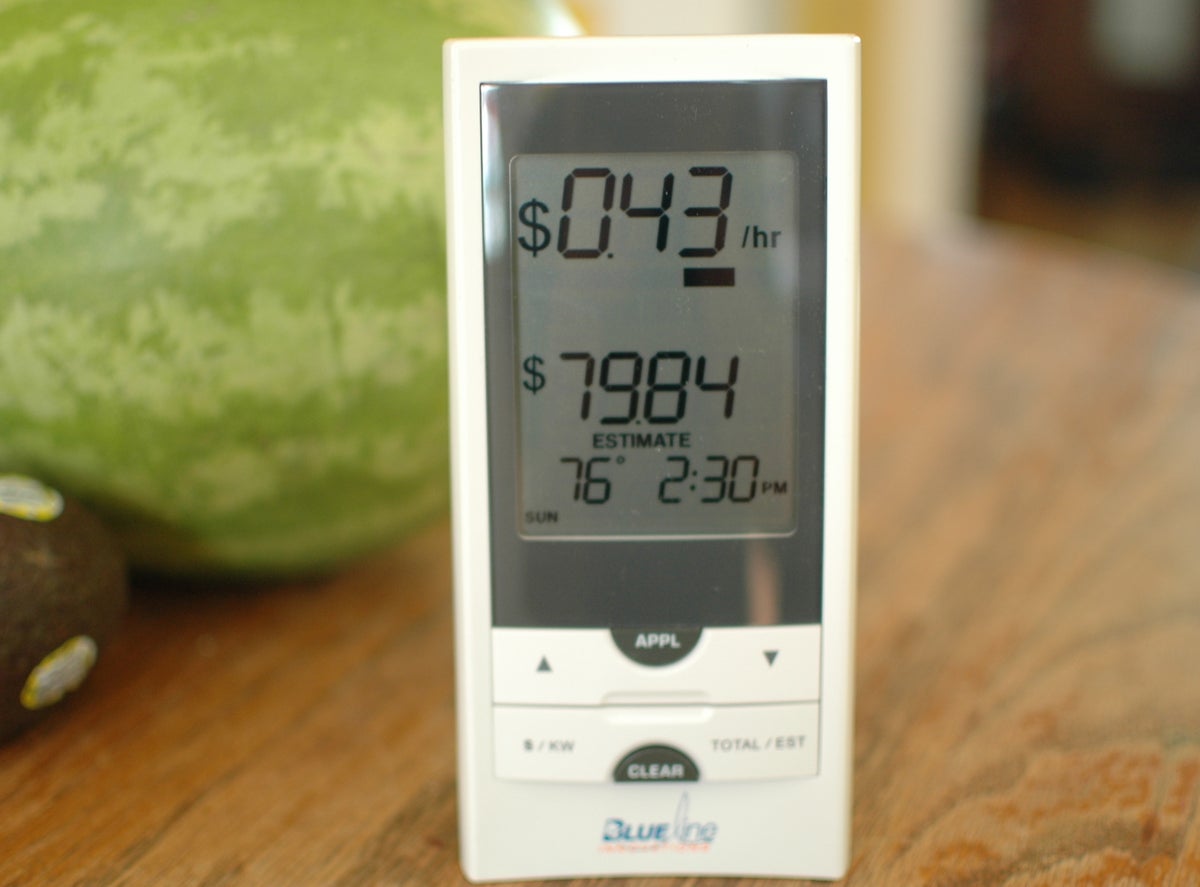Microsoft Hohm connects to home electricity monitor (photos)
Microsoft's Hohm Web application can now get data from the PowerCost Monitor whole-house electricity monitor by using a home broadband connection.

PowerCost Monitor
Many of us are awash in information every day through e-mail, social media, or the Web. But when it comes to home energy, the standard is a hard-to-understand monthly paper bill.
The PowerCost Monitor from Blue Line Innovations is a whole-house electricity monitor, one of a growing number of options for getting detailed information on home energy. By better understanding where electricity is going, people can find ways to conserve. Microsoft said Tuesday its Hohm Web application can now connect to the electricity monitor, letting people view even more information online.
Watch your AC kick in
This screenshot from Hohm shows how a home's "baseline" electricity consumption increases when big energy consumers, such as air conditioners, turn on.
Microsoft Hohm on iPod Touch
One of the advantages of Hohm or other home energy applications is the ability to view data from any Internet-connected device. Here is the mobile version of Microsoft Hohm showing energy data on an iPod Touch.
PowerCost Monitor with WiFi kit
Here are the main components of the PowerCost Monitor WiFi which is compatible with Microsoft Hohm. You need the monitor (the handheld display); a sensor (on left) which reads the data from an electricity meter; and the donut-shaped WiFi gateway, which sends information from the meter to Microsoft Hohm using a home broadband connection.
Optical sensor
Rather than use a smart meter to get regular home energy data, this system uses an optical sensor which reads the data from a regular meter. Using a radio frequency, it sends the data to the home display or Wi-Fi gateway.
Installation for the whole system, which costs $249, is a little tricky, particularly the part where you need to attach the sensor to the meter glass. But it doesn't require an electrician to install as other whole-house monitoring products do. Note the sensor does not work with net meters which spin backward when home solar panels produce energy.
What goes on at night?
Having an electricity monitor, either a Web application or hardware display, is a regular reminder of your electricity use and should help you find ways to save energy. In testing this particular one for a few days, I found that it prompts you to try to find out more, such as how much one device uses, or what is the energy-cycle pattern for appliances.

